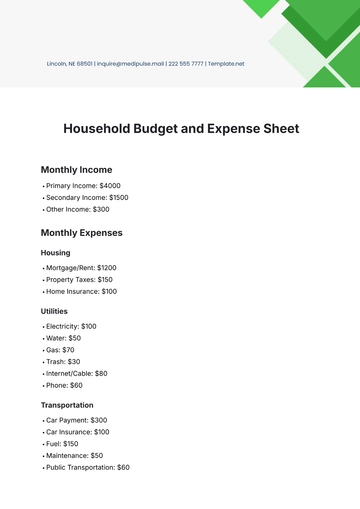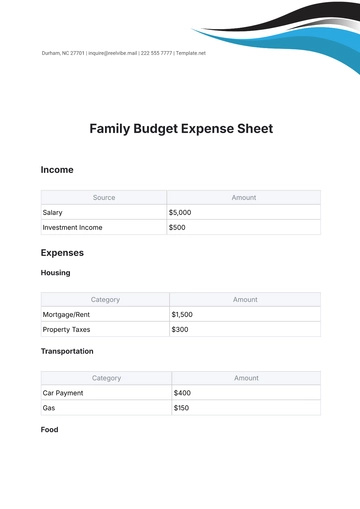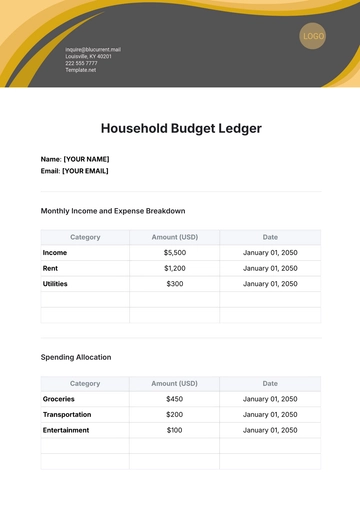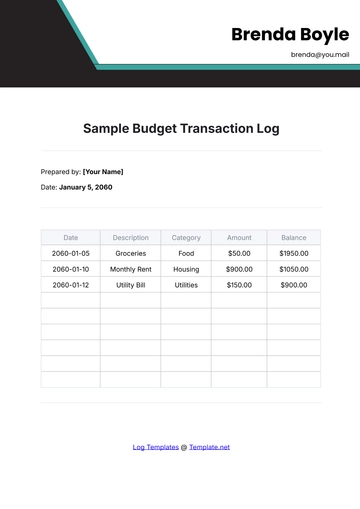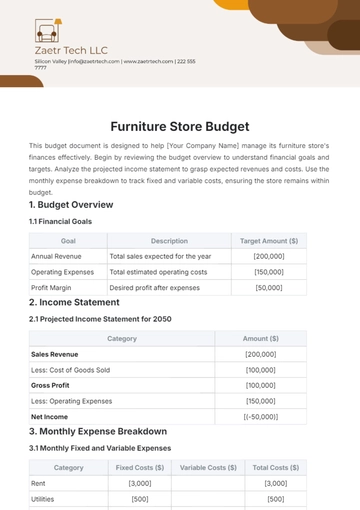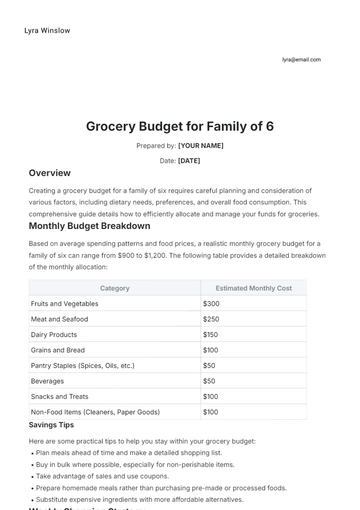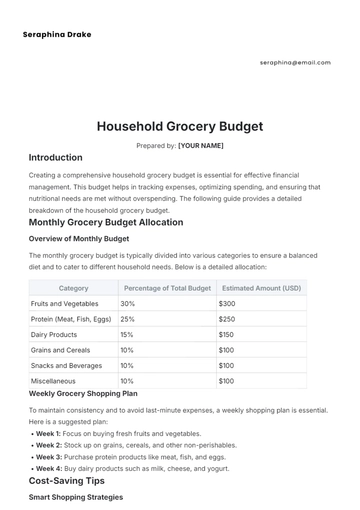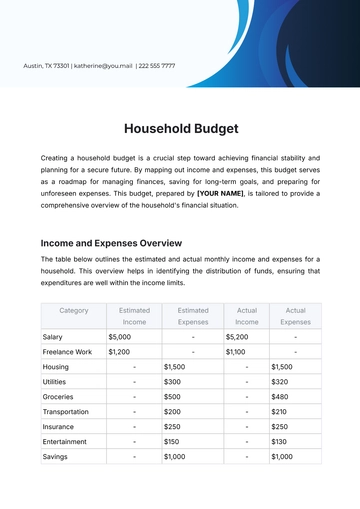Free Grocery Budget for Family of 6
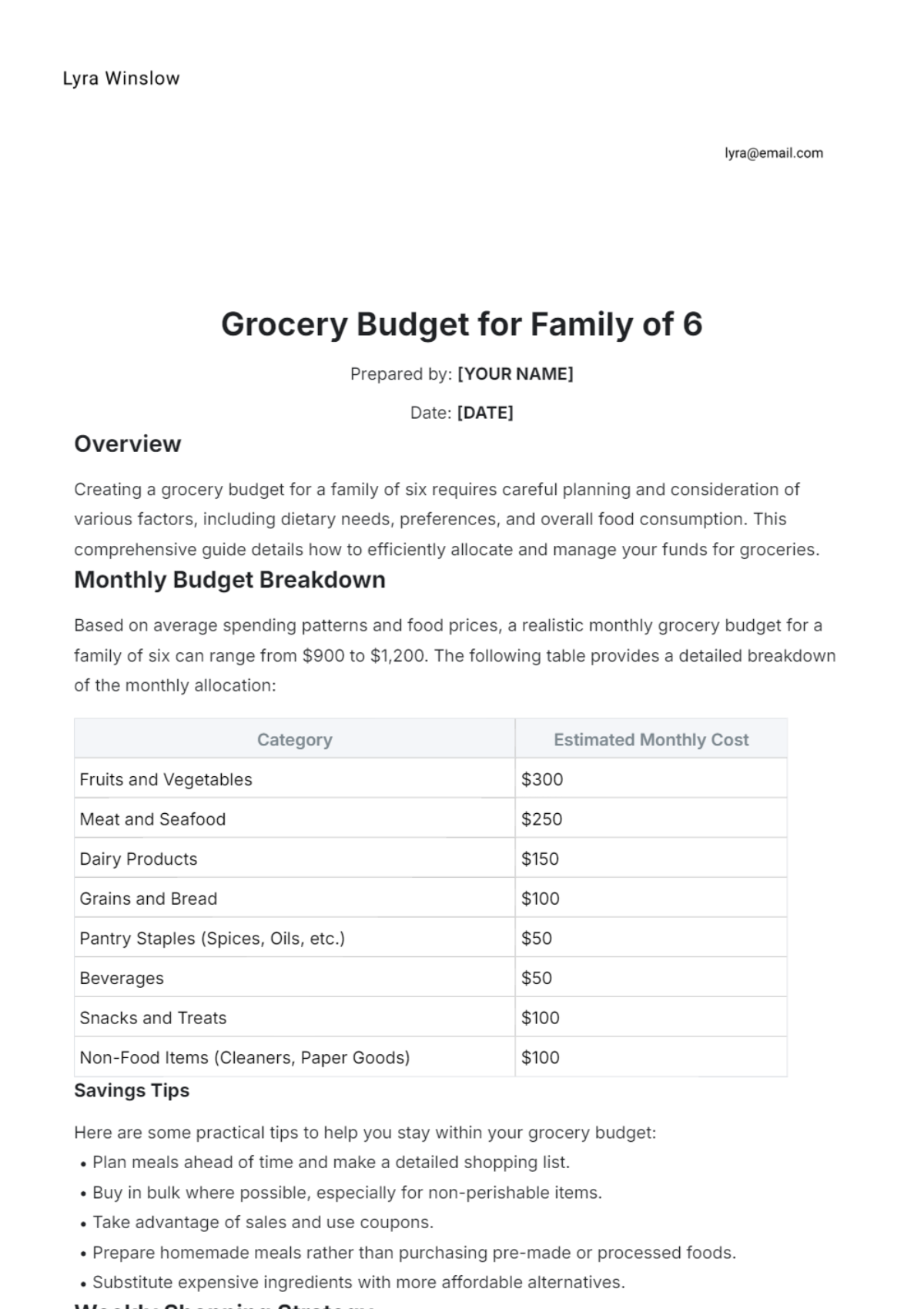
Prepared by: [YOUR NAME]
Date: [DATE]
Overview
Creating a grocery budget for a family of six requires careful planning and consideration of various factors, including dietary needs, preferences, and overall food consumption. This comprehensive guide details how to efficiently allocate and manage your funds for groceries.
Monthly Budget Breakdown
Based on average spending patterns and food prices, a realistic monthly grocery budget for a family of six can range from $900 to $1,200. The following table provides a detailed breakdown of the monthly allocation:
Category | Estimated Monthly Cost |
|---|---|
Fruits and Vegetables | $300 |
Meat and Seafood | $250 |
Dairy Products | $150 |
Grains and Bread | $100 |
Pantry Staples (Spices, Oils, etc.) | $50 |
Beverages | $50 |
Snacks and Treats | $100 |
Non-Food Items (Cleaners, Paper Goods) | $100 |
Savings Tips
Here are some practical tips to help you stay within your grocery budget:
Plan meals ahead of time and make a detailed shopping list.
Buy in bulk where possible, especially for non-perishable items.
Take advantage of sales and use coupons.
Prepare homemade meals rather than purchasing pre-made or processed foods.
Substitute expensive ingredients with more affordable alternatives.
Weekly Shopping Strategy
To further manage your grocery expenses, it's beneficial to break down the monthly budget into weekly allocations. Here’s an example of a weekly shopping plan:
Week | Category | Estimated Cost |
|---|---|---|
Week 1 | Fruits and Vegetables, Meat and Seafood, Dairy Products | $275 |
Week 2 | Grains and Bread, Pantry Staples, Beverages | $150 |
Week 3 | Fruits and Vegetables, Meat and Seafood, Snacks and Treats | $275 |
Week 4 | Non-Food Items, Pantry Restock, Miscellaneous | $200 |
Shopping Tips
Optimize your weekly shopping with these strategies:
Shop at different stores to get the best deals on various items.
Buy seasonal produce to save costs on fruits and vegetables.
Avoid shopping when hungry to prevent impulse buys.
Tracking and Adjustments
It's essential to continually track your spending and adjust your budget as needed. Use a tracking tool, whether a simple spreadsheet or a budgeting app, to monitor expenses and identify areas where you can cut costs.
By following this structured approach to grocery budgeting, you can ensure that your family has access to nutritious, diverse meals while maintaining financial stability.
- 100% Customizable, free editor
- Access 1 Million+ Templates, photo’s & graphics
- Download or share as a template
- Click and replace photos, graphics, text, backgrounds
- Resize, crop, AI write & more
- Access advanced editor
Efficiently manage your large household’s grocery needs with Template.net’s Grocery Budget for Family of 6 Template. This customizable template is editable in our AI Editor Tool, allowing you to track food spending in detail for every family member. Adjust categories and details to fit the unique needs of a busy family life.
You may also like
- Budget Sheet
- Personal Budget
- Non Profit Budget
- Monthly Budget
- Project Budget
- HR Budget
- Company Budget
- Home Budget
- Weekly Budget
- College Budget
- Business Budget
- Construction Budget
- Small Business Budget
- Hotel Budget
- Annual Budget
- Home Renovation Budget
- Household Budget
- Student Budget
- Grocery Budget
- Marketing Budget
- Corporate Budget
- Startup Budget
- Manufacturing Budget
- Church Budget
- University Budget
- Annual Budget Plan
- Event Budget
- Operating Budget
- Travel Budget
- Food Budget
- IT and Software Budget
- School Budget
- Real Estate Budget
- Sales Budget
- Conference Budget
- Budget Finance
- Freelancer Budget
- Budget Advertising
